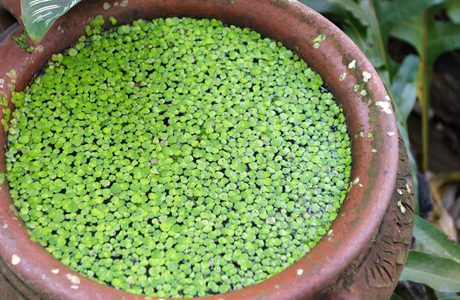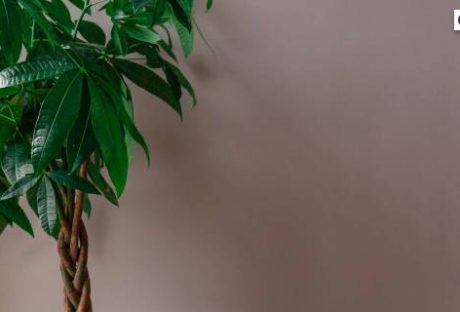The Kratom tree is a tropical evergreen native to Southeast Asia. Officially called Mitragyna speciosa, the Kratom tree is a member of the Rubiaceae botanical family and thrives in warm, humid climates.
If you’re making a kratom strains comparison to see which type of Kratom offers the best properties for you, it’s worth taking a more in-depth look at the Kratom botanical family. Here is a simple guide for those new to Kratom and seeking further information about the botanical group this versatile leaf comes from.
What Are the Most Important Rubiaceae Botanicals?
While the Rubiaceae botanical family is vast, there are a few species that have numerous practical applications. These family members are known for their uses in medicine, recreational use, and consumption. From Kratom powder to medicines, this plant has vivid uses.
Mitragyna speciosa
The Kratom plant is where the leaves for Kratom powder and capsules are harvested. These recreational plant products can boost your motivation, improve your outlook, and even reduce temporary muscle aches or tension, like after a workout. While traditionally used in Southeast Asia, where the tree originates, Kratom is gaining traction in the Western world as its many wellness-promoting uses become better known.
Coffea plants
Coffee plants are trees or small shrubs found in tropical Asia and parts of Africa. There are over 120 species native to these areas, but only three are safe for human consumption: Coffea arabica, Coffea canephora, and Coffea liberica.
While the leaves of Coffea arabica are poisonous, the seeds can be harvested, dried, and roasted to produce coffee beans, which are then ground to be used in hot or cold beverages.
Uncaria gambir
The Uncaria gambir is a wild shrub that grows in China and parts of Southeast Asia. This plant produces the substance gambier, which is used as a brown dye and tanning agent in leather production.
Cinchona
Quinine, which comes from the bark of the Cinchona, is integral to human medicine because it’s been used to treat malaria since the 1600s. As of 2006, it is no longer officially recommended by the World Health Organization for malaria treatment, but its economic impact is historically significant. All cinchona trees are native to South America.
Carapichea ipecacuanha
The roots of the Carapichea ipecacuanha provide ipecac, which has been used medicinally to induce vomiting after poisoning or drug overdose.
Physical Properties of Rubiaceae
The Rubiaceae botanical family consists of shrubs, some trees, and a couple of herb species. The base of these plants is a branched root system, and they have an erect stem.
Many members of this botanical group also have floral characteristics, and for the most part, are hermaphrodites. This means the plant’s reproductive parts (complete or partial) are usually linked to both the female and male sexes. Others within the family are unisexual, though this is rare.
The plants within the Rubiaceae family are commonly referred to as the bedstraw, madder, or coffee family and are recognizable for their simplistic opposite leaves with interpetiolar stipules. The Rubiaceae botanicals also have endospermic seeds, which means there is an endosperm inside the mature seed. It’s a fleshy, oily storage organ that contains the reserve food.
What Are the Characteristics of the Kratom Botanical Family?
Within this family of flowering plants, over 13,000 species of trees, herbs, and shrubs serve various purposes for physical wellness, consumption, ornamentation, and more. The Rubiaceae are the fifth largest flowering plant family worldwide.
A similarity between the many members of the Rubiaceae botanical family is the alkaloids that give each plant its unique properties. Mitragyna speciosa (Kratom) is known for the alkaloids mitragynine and 7-hydroxymitragynine, both of which interact with receptors in the brain to deliver the mental and emotional benefits that Kratom is known for. These alkaloids are incredibly potent but can become less intense if they’re broken down by mixing Kratom powder with boiling water since the extreme heat causes alkaloid instability.
In the Coffea arabica plant, you’ll find the most popular purine alkaloid, caffeine, which is enjoyed daily by people across the globe for its neurologically stimulating effects. In Carapichea ipecacuanha, the alkaloids present are called emetine and cephaeline, and it is the alkaloids that are responsible for inducing vomiting when people consume ipecac. In the Cinchona bark, quinine is the most potent alkaloid.
The traits that many families of the Rubiaceae species offer can be broken down into three primary categories:
Medicinal plants
Many plants from the Rubiaceae family possess medicinal properties and have historically been useful in the medical field. Cinchona is perhaps the most notable of this group.
Beverage plants
The most popular Rubiaceae plant used for beverages is Coffea arabica, which is the source of coffee beans. Kratom, or Mitragyna speciosa, can also be included in this grouping because of its popularity as a tea. It’s delicious when mixed with orange juice and other fruity beverages as well.
Culinary plants
While not considered staple crops, plants in the Rubiaceae family have been consumed by various cultures during famine or rituals due to their complex nutritional profile.
African peach, Nauclea latifolia, with its deep red, sweet flesh, is often cooked and eaten as a side dish, consumed raw, or dried and used as a seasoning. They have a high concentration of antioxidants and are purported to have medicinal applications for managing blood sugar levels and as a digestive aid.
Ornamental plants
The Rubiaceae family also has plenty of floral botanicals that make beautiful decorative pieces for the home. Rubia, Gardenia, and Mussaenda are just a few that fall into this category.
Dye plants
Botanicals have been used as a natural source of fabric dye for centuries, and the Rubiaceae family creates a plethora of colors. Rose madder makes a bold red hue, while gambier gives a deep brown color and morinda citrifolia produces a rich yellow.
Understanding the Kratom Botanical Family
The Rubiaceae botanical family have been a crucial part of civilization for centuries, providing medicinal, culinary, and decorative plants for people in numerous cultures.
Kratom, derived from Mitragynia speciosa, has recently gained popularity among the wellness community for its therapeutic benefits ranging from calming an agitated nervous system, to assisting in faster post-workout recovery, to promoting increased alertness throughout the day.
By understanding the historical uses and biological properties of Kratom and its cousins in the Rubiaceae family, you can learn more about how Kratom products interact with your body and purchase Kratom with confidence.
Read Also:






















